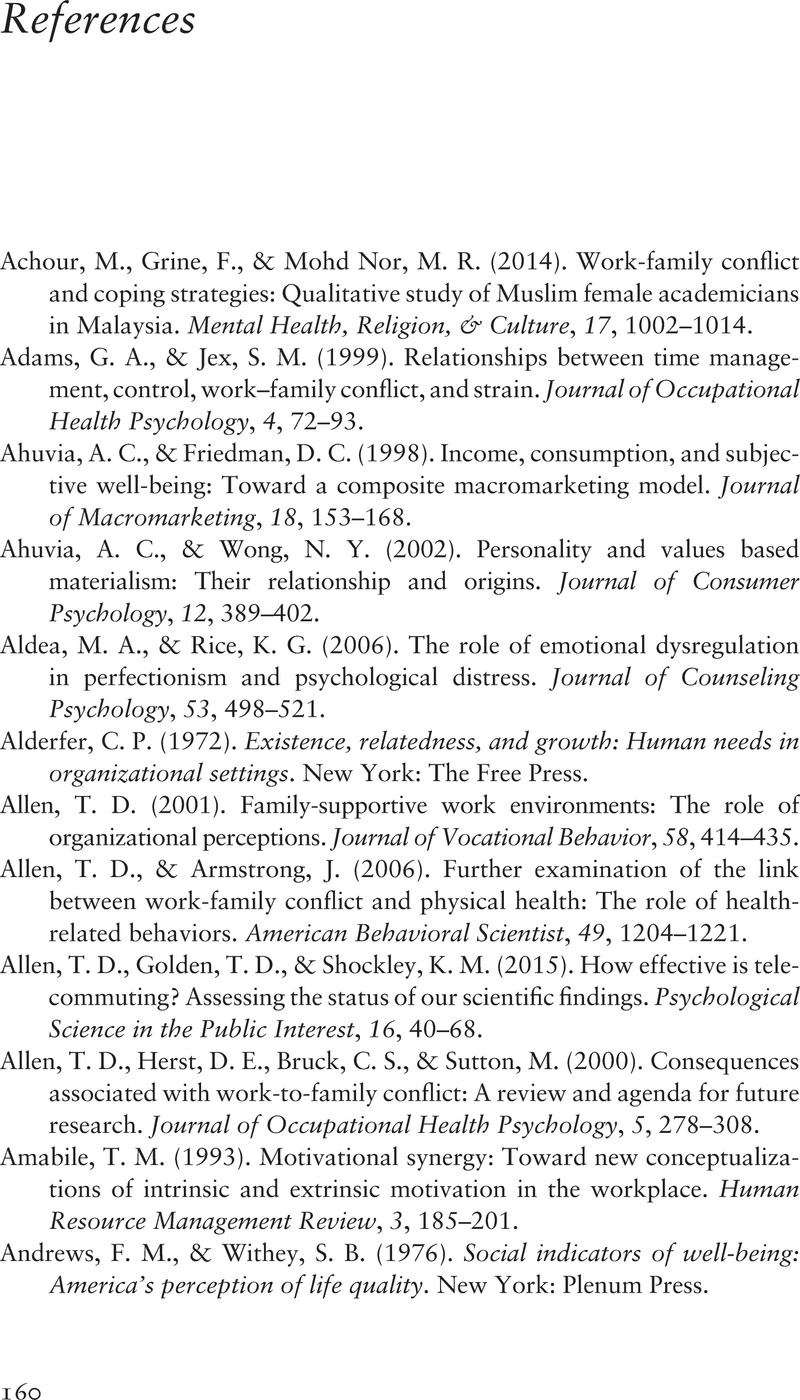Book contents
- The Balanced Life
- The Balanced Life
- Copyright page
- Dedication
- Contents
- Figures
- Tables
- Preface
- Acknowledgments
- About the Author
- Part I Introduction
- Part II Interdomain Strategies to Increase Overall Life Satisfaction and Achieve Balance
- Part III Interdomain Strategies to Increase Domain Satisfaction and Achieve Balance
- Part IV Epilogue
- References
- Index
- References
References
Published online by Cambridge University Press: 21 April 2022
- The Balanced Life
- The Balanced Life
- Copyright page
- Dedication
- Contents
- Figures
- Tables
- Preface
- Acknowledgments
- About the Author
- Part I Introduction
- Part II Interdomain Strategies to Increase Overall Life Satisfaction and Achieve Balance
- Part III Interdomain Strategies to Increase Domain Satisfaction and Achieve Balance
- Part IV Epilogue
- References
- Index
- References
Summary

- Type
- Chapter
- Information
- The Balanced LifeUsing Strategies from Behavioral Science to Enhance Wellbeing, pp. 160 - 182Publisher: Cambridge University PressPrint publication year: 2022



